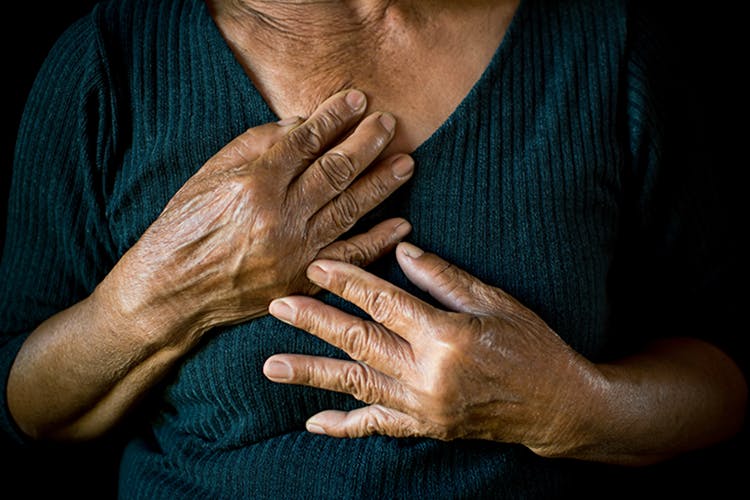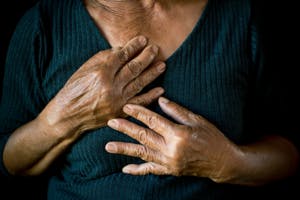What Are the Common Signs and Symptoms of Cardiovascular Disease?

Cardiovascular disease is the leading cause of death in the United States, responsible for one death every 37 seconds according to the CDC. Cardiovascular diseases are especially prevalent in senior citizens, so medical intervention and other assistance, such as in-home care, can reduce their risk of serious diseases including heart attack and stroke. With how common and deadly cardiovascular diseases—conditions that affect the heart and blood vessels—are in the US, it’s important for adults to know the signs and symptoms of these conditions.

Talk to a Doctor
The first step in diagnosing cardiovascular disease is to make an appointment with a doctor. Doctors will review vital signs; check blood pressure and weight; ask about family history; and ask you or your loved one about any unusual symptoms, such as chest pain or fatigue. Then they will order tests based on the specific disease from which they suspect you or your loved one are suffering, if any. If you visit a cardiologist, they can conduct multiple tests to diagnose cardiovascular diseases within their own facility.
Testing
Testing will vary based on your signs and symptoms. However, some of the most common tests that can find cardiovascular disease are:
- CT scans. Cardiac computerized tomography, or CT, scans use advanced X-rays to look at the heart and the arteries that supply blood to heart tissue.
- Cardiac catheterization. Another common test, this involves inserting a catheter or tiny tube into a vein, which is then fed through blood vessels into your heart. Doctors use this process to inspect your heart and determine if it’s working properly.
- An echocardiogram uses doppler sound to take an image of your heart and evaluate its health. Many doctors use echocardiograms to determine the size, shape, and thickness of your heart.
- Cardiac MRI. Using a combination of magnets, radio waves, and contrast dye, an MRI gets an extremely detailed image of your heart. This is often used to explain abnormalities found in less detailed tests, such as echocardiograms, and can be used to find heart valve disorders, cardiac tumors, and coronary heart disease.
- Holter monitors. These monitors are temporary mobile devices that measure your heart rate consistently over a designated period of time—often 24 to 48 hours—sending real-time results to a technician who can spot abnormal heart rhythms, or arrhythmias.
- Stress test. A common test used to diagnose cardiovascular disease is a stress test. Doctors will submit your body to stress by having you walk or jog on a treadmill, or they may inject you with chemicals that stimulate a stress response in the body. The object is to evaluate the cardiovascular system’s performance under stress. These tests can diagnose many types of cardiovascular disease, including coronary artery disease.
Early Warning Signs
You should know the early warning signs of cardiovascular disease. Knowing these signs can help you determine if you or a loved one should see a cardiologist or even visit the nearest emergency room.
Urgent symptoms include chest pain, difficulty breathing, fainting, and extreme fatigue. These may be signs of a serious cardiovascular event such as a heart attack. Men may experience arm pain if they’re having a heart attack. However, women are more likely to have other symptoms, including nausea, sweating, and fatigue. If you or a loved one show any of these signs, take them to the ER.
There are other signs of less severe cardiovascular diseases, including an irregular heartbeat, fatigue, occasional chest discomfort (not pain or tightness, which are more severe), dizziness, and changes in sleeping patterns.
Risk Factors
High blood pressure is one of the top risk factors for cardiovascular disease. High blood pressure puts stress on your blood vessels, which can cause them to harden or thicken. This can eventually lead to narrow blood passages and conditions such as stroke in which blood supply is interrupted.
High cholesterol can lead to plaque and blockage in your blood vessels and is one of the top causes of heart attacks. Improve your diet and exercise regularly to help control your blood pressure and cholesterol levels.
Smoking, drinking alcohol excessively, a stressful lifestyle, and living a sedentary lifestyle can increase your chances of cardiovascular disease. Talk to a doctor to learn how to make changes that can reduce your risk of cardiovascular disease.
There are also some heart disease risk factors beyond your control, including your age—seniors are more likely to develop cardiovascular diseases—air pollution, conditions including sleep apnea, exposure to radiation, and family history of cardiovascular problems.
Living with Cardiovascular Disease
Everyday tasks can be difficult for those who suffer from cardiovascular diseases, especially for seniors. Treating heart disease can involve changes to diet, getting light exercise, and taking prescribed medications to improve cardiovascular health. In-home caregivers can help the senior loved ones in your life manage their treatment plan and follow lifestyle change recommendations. Even better, 24 Hour Home Care’s attentive and experienced in-home caregivers can assist with other daily tasks, such as hygiene and house care. Call us today to learn how we can help your senior friend or family member, especially those who are at risk of or are recovering from cardiovascular disease.
